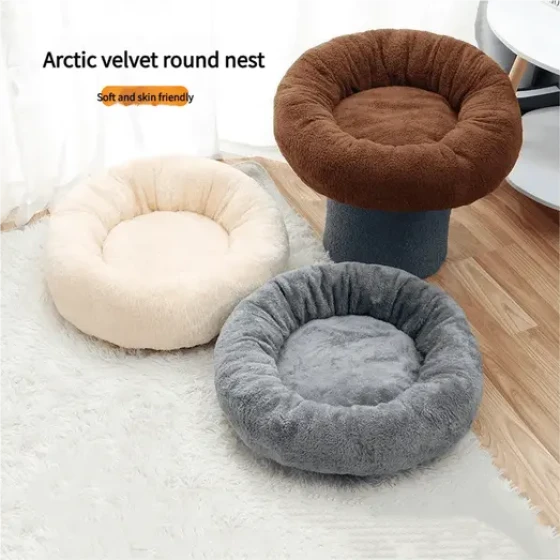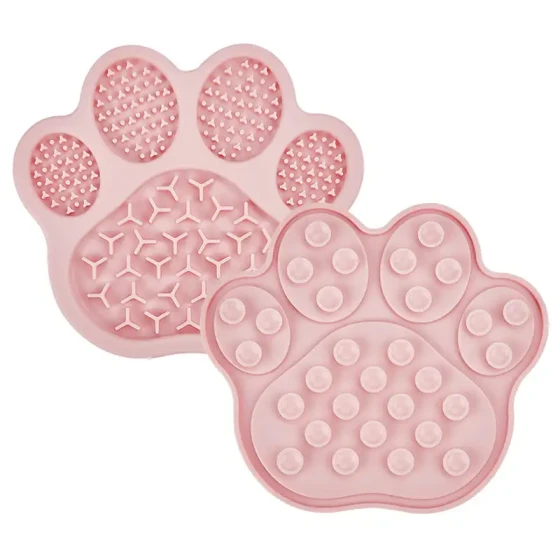Pet Adoption Guide_Cat and Dog Adoption Procedures and Precautions
Pets are loyal friends to humans. Whether it is a soft and cute cat or a lively dog, they can bring endless joy and companionship to our lives. Choosing adoption not only provides a warm harbor for a homeless life but also supports the concept of "adopt instead of buy," reducing the number of stray animals. So, what procedures need to be followed to adopt a cat or dog, and what precautions should be taken?
Simply put, the pet adoption process generally includes understanding your own conditions, choosing adoption channels, submitting applications and reviews, interacting with the pet, signing adoption agreements, and bringing the pet home to adapt to the new environment. During the adoption process, you need to pay attention to many details to ensure the pet can smoothly integrate into the new home and live healthily and happily.
Why choose adoption?
When deciding to keep a pet, many people hesitate between "buying" or "adopting." The popularization of "adopt instead of buying" is because it has multiple meanings and advantages:
- Saving lives: Adoption directly provides stray animals a second chance at life, avoiding the difficulties or even euthanasia they might face in shelters. Thousands of stray cats and dogs wait for a home every year; your adoption can change one life’s trajectory.
- Resisting illegal breeding: Some irresponsible breeders and pet shops may engage in inbreeding for profit, causing congenital diseases in pets. Adoption effectively reduces the demand for these illegal practices.
- Lower cost: Compared to buying purebred pets that can cost thousands or even tens of thousands, adoption usually only requires a small registration fee, vaccination fee, or deposit, sometimes free, reducing financial burdens.
- Diverse choices: Many shelters and rescue organizations have cats and dogs of different ages, breeds, and personalities. Whether "Chinese rural dogs" or purebred cats, you can find the "fur baby" that resonates with you.
- More understanding pets: Some rescued adult cats and dogs may have experienced hardships, making them more appreciative and grateful. They might have received basic training and adapt more easily to family life.
- Support available: Professional adoption agencies typically provide pet care consultation and follow-up guidance to help beginners take better care of pets.
Self-assessment before adoption: Are you ready?
Adopting a pet is a heavy responsibility requiring time, energy, money, and love. Before taking the first step, please carefully evaluate your conditions:
- Time: How much time do you have daily to accompany your pet? Dogs need walks, training, and interaction; cats are relatively independent but still need playtime and grooming. If you often work overtime, travel, or have a fast-paced life, please consider carefully.
- Space: Is your living environment suitable for pets? Is there enough activity space? If you rent, does your landlord allow pets? Ensure windows and balconies have adequate safety protections to prevent cats from falling or dogs from running away.
- Economy: Taking care of a pet costs a considerable amount, including food, toys, daily supplies, and medical expenses. In China, annual pet expenses range from a few thousand to tens of thousands of yuan. Medical expenses during illness can be especially high. Do you have stable financial resources to cover these costs?
- Family members: If you live with family, ensure all members agree and are willing to accept the new member. Everyone’s attitude and behavior after the pet comes home affect its adaptation.
- Pet-keeping experience: Do you have previous experience with pets? If not, are you willing to spend time learning related care knowledge? New pet owners may face challenges that require patience and perseverance.
Cat or dog? Very different personalities
Choosing a cat or dog largely depends on your personality and lifestyle. People often say, "Raising a cat is like dating; raising a dog is like raising a child," which is quite vivid.
- Dog: Usually enthusiastic and lively, loyal and attached to the owner, needing a lot of companionship, outdoor activities, and training. If you love sports, outdoor activities, and have enough time to accompany, a dog will be a great partner.
- Cat: Relatively independent, aloof in personality, but can also express attachment to the owner. They are more suitable for homes with smaller spaces or less owner time. Cats focus more on self-cleaning and do not require frequent outdoor activities.
Of course, this is not absolute; every pet has a unique personality, and even pets of the same breed can differ greatly. Spending time interacting with them before adoption to understand their character is key to finding your most suitable "fur baby."
Pet Adoption Process: Step by Step Bringing Your "Fur Baby" Home
The adoption process may vary by organization, but generally follows these steps:
-
Finding adoption channels: You can find pets available for adoption through:
- Animal shelters/rescue centers: This is the most direct adoption channel, usually with many stray animals awaiting adoption. In China, there are animal rescue organizations in places like Beijing, Shanghai, Nanjing, Shenzhen, etc.
- Pet adoption platforms: Some online platforms gather information on various pets available for adoption, such as the "Chong An Jia" platform.
- Social media/communities: Follow local animal protection groups or individuals posting rehoming information.
-
Understanding the pet to be adopted: After deciding to adopt, learn details about the pet’s age, gender, health, personality, and whether there are any behavioral issues. Visit multiple times, spend time interacting with them, observe their behavior.
-
Submitting the adoption application: Fill in the adoption application form, provide personal information, living environment, pet care experience, etc. Some organizations may require ID cards, residence proof, and other documents.
-
Organization review and home visit: Adoption agencies will review applications and may conduct phone interviews or home visits to assess your pet care environment and responsibility. These visits are not "census checks" but to ensure pets live in safe, stable environments.
-
Signing the adoption agreement: If approved, you will sign a formal adoption agreement with the agency. The agreement clarifies the rights and obligations of both parties, such as commitment not to abuse or abandon, regular vaccinations, and timely neutering. Some agencies may charge adoption fees or deposits covering medical or neutering costs.
-
Bringing the pet home: Prepare pet supplies such as dog/cat food, bowls, water dishes, leashes/carriers, litter boxes, litter, mats or beds, toys, etc. Pets new to an environment may be nervous and need time to adapt.
-
Follow-up visits and communication: Some adoption agencies conduct follow-up visits to understand adaptation and health status. Regular communication helps promptly address potential issues.
Special precautions for adopting cats:
- Home safety: Cats are good at jumping and climbing; close windows and balconies well, install sturdy protective nets to prevent falls. Store small objects and wires safely to avoid accidental ingestion or danger.
- Litter boxes: Prepare enough litter boxes, recommended number is number of cats plus one, placed in quiet, convenient locations. Most cats naturally use litter boxes, but beginners may need guidance.
- Adaptation space: Newly arrived cats may feel scared; initially place them in a separate room with food, water, litter box, and hiding spots to familiarize with the new environment slowly.
- Interacting with other pets: If there are other pets at home, guide them gradually to meet and accept the new member to prevent conflicts.
Special precautions for adopting dogs:
- Leash and outings: Always use a leash when walking your dog. This is not only civilized but essential for the dog’s safety.
- Home training: Adopted dogs may need training at home such as fixed spot elimination and not biting things. It requires patience and correct methods.
- Exercise amount: Dogs need sufficient exercise to expend energy; different breeds require different activity levels. Ensure daily adequate outdoor time.
- Socialization: Appropriately allowing your dog to socialize with other friendly dogs benefits their physical and mental health.
Pet health management after adoption:
Whether cat or dog, a comprehensive health check is necessary after bringing the pet home.
- Physical exam and vaccination: Take the pet to a regular veterinary hospital promptly for checkups, understand their health, and complete vaccinations per vet’s advice. Rabies vaccination is mandatory.
- Deworming: Regularly deworm pets internally and externally to prevent parasite infestations.
- Neutering: If the adopted pet is intact and of appropriate age, neutering is recommended. It helps prevent some diseases and controls stray animal numbers.
- Microchipping: In China, many places require pets to be microchipped for easier management and retrieval if lost.
- Regular checkups: Even healthy pets should have annual checkups to detect potential problems early.
Frequently Asked Questions
- Does adopting a pet cost money?
Adoption usually does not require high fees like buying purebred pets. Some organizations may charge small adoption fees, vaccination fees, neutering fees, or deposits, usually to subsidize rescue costs, not for profit. Some agencies offer free adoptions but with stricter review conditions and follow-up requirements. - Can I adopt purebred pets?
Shelters and rescue agencies are not only Chinese rural dogs and common tabby cats; sometimes purebred cats and dogs appear, often abandoned or lost. - Will adopted pets have health or behavioral problems?
Some stray animals may have experienced illness or trauma on the streets, but reputable agencies perform physical exams and basic treatment before adoption. Some pets may have behavioral problems requiring adopter patience and correct training methods. - What if the pet doesn’t adapt after adoption?
Careful assessment and understanding before adoption are crucial. If you really cannot continue after adoption, contact the original adoption agency or seek responsible rehoming channels; never abandon the pet.
Adopting a pet is like starting a new journey. It requires your patience, love, and responsibility, but you will gain unconditional trust, loyalty, and endless joy. We hope this guide helps you better understand pet adoption and find that special "fur baby" that belongs to you.





